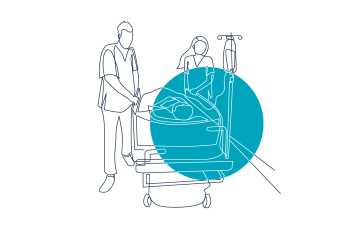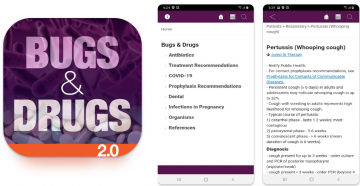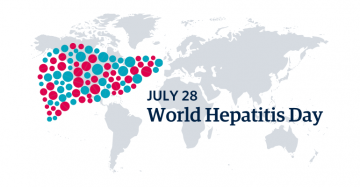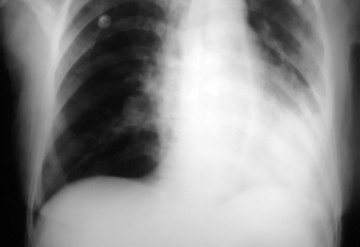By Harleen Chohan, Jenny Hong, SungEun Michelle Kim, Victor Leung and Colin Lee on October 22, 2025
In alignment with the recommendations from the BC Provincial Antimicrobial Clinical Expert Committee (PACE), we now recommend using Ceftriaxone 1 gram IV every 24 hours as the initial dosing regimen for treating mild to moderate community-acquired pneumonia, urinary tract infections and skin and soft tissue infections in non-critically ill patients.
By Dr. Rohit Vijh on May 21, 2024
Given the increasing rates of syphilis and changing epidemiology of syphilis with increasing incidence in heterosexual populations, my clinical suspicion for syphilis testing has increased. If a patient presents with primary or secondary lesions that are amenable to PCR swabbing, I now collect a PCR swab specimen, in addition to sending the patient for serology.
By Drs. Rohit Vijh and Jason Wong on May 17, 2023
Pregnant persons should be screened for syphilis during the first trimester (or first prenatal visit), and at delivery (or any time after week 35 for those planning home births).
By Dr. Karin Kausky, Dr. Tracy Monk, and Daniela Michel, MPH on January 11, 2023
Antimicrobial resistance is recognized as a top public health threat and is estimated to be directly responsible for 5,400 deaths and $1.4 billion in health care costs in Canada in 2018 which underlines the critical importance of wise prescribing of antibiotics. Every time I prescribe an antibiotic now, I check the Bugs & Drugs guidelines via PathwaysBC.ca.
By Drs. Piszczek, Wright, and Grant on November 16, 2022
My approach now is to have the confidence to reassure patients who are low risk that SARS-CoV2 infection will most likely be mild for them and that no specific therapy is needed. Those who are of intermediate risk will also generally do well, but it is an opportunity to create a plan of what to do if they have flu-like symptoms, including their preferences should they test COVID positive. For those who are at high risk, especially CEV-1, I ensure them that there is a clear testing and treatment plan. Any physician can prescribe Nirmatrelvir/rt. A step-by-step instruction guide for prescribing is available on the BCCDC website.
By Drs. Mel Krajden and Jim Gray on July 28, 2022
WHO observes July 28th as World Hepatitis Day and aims to eliminate Hepatitis B and C by 2030. The Pan-Canadian Sexually Transmitted and Blood-Borne Infections (STBBI) Framework for Action released in 2018 echoes this goal and calls for 80% of eligible people in Canada to receive hepatitis C treatment by 2030. In order to achieve these goals by 2030, high rates of testing and diagnosis are essential. New HCV therapies are well tolerated, require 8–12 weeks of treatment, are publicly funded in BC, and have cure rates of about 95%.
By Drs. J Marie Kim and William Connors on June 15, 2022
Skin and soft tissue infections (SSTIs) are exceedingly common and account for up to 10% of all hospital admissions in Western countries. The most common SSTIs, cellulitis, refers to diffuse, superficial, spreading skin infections, often with significant inflammation of lymphatic vessels. Cellulitis can frequently recur and studies have shown that up to 29% of admissions with cellulitis were due to repeat episodes. Prophylactic therapies and mitigating of risk factors have been recently shown to reduce recurrence. The focus of this article is the prevention of recurrent, lower-extremity, nonpurulent cellulitis that is not associated with major penetrating trauma, preceding leg ulceration, or surgery.
By Dr. Susan Hollenberg on March 17, 2021
It is prudent to reduce the risks of pneumococcal illness during this time of potentially severe respiratory sequelae of COVID-19, and the newly introduced BC Care Bundle Incentive payment includes a focus on ensuring eligible people receive this vaccine.
By Mark W. Hull MD MHSc on November 13, 2018
Over the last five years, on an ongoing basis, we have seen new HIV infections occurring in young gay, bisexual and other men who have sex with men (MSM). The majority of these individuals had had a prior negative HIV test within the last year, or were presenting with signs or symptoms supportive of an acute HIV infection, suggesting recent exposure and transmission of HIV infection, highlighting the need for novel HIV prevention strategies.
By Dr. Jennifer Grant on September 6, 2017
Recent data show that up to 90% of patients with a reported penicillin allergy are mislabelled and of those who are allergic, many beta-lactams can still be safely prescribed due to low risk of cross-reactivity. Mislabelling of penicillin allergy is due to many things including misdiagnosis (confusing a viral exanthema for allergy), purer formulations of antibiotics, loss of allergy and differences in side-chain structure.
By Dr. Alissa Wright on January 25, 2017
Canadians travel a lot and are increasingly traveling to more exotic and remote destinations. Unfortunately, travel does carry certain risks with respect to infection. Post-travel assessment of a febrile patient must be comprehensive, but completed in a timely manner so that patients get the care they need.
By Dr. Soren Gantt on June 8, 2016
Approximately 1 out of every 150 live-born infants has congenital CMV infection (cCMV). Of these, most are asymptomatic. However, more than 20% will suffer permanent neurologic sequelae, including hearing loss, intellectual disability, and visual deficits. In fact, cCMV is responsible for 25% of all childhood hearing loss, and is the second most common cause of intellectual disability after Down syndrome.
By Dr. Natasha Press on March 5, 2014
The most recent AHA guidelines (2007) have limited antibiotic prophylaxis to those patients at highest-risk for developing endocarditis and who are undergoing high-risk invasive procedures.
By Dr. Sarah Stone on October 7, 2013
As a family physician practicing at St Paul’s Immunodeficiency clinic in Vancouver, I have cared for patients living with HIV for over 10 years. Many patients are referred to the clinic at a stage of disease where treatment would have been beneficial if started earlier.
By Dr. Natasha Press on April 29, 2013
In the past few years, a hypervirulent strain of C. difficile, called NAP-1, has caused hospital outbreaks that have been unusually severe and recurrent.
By Dr. Jan Hajek on February 18, 2013
The world is increasingly connected and infectious diseases know no borders. We need to be pro-active in adequately screening our patients.
By Dr. Yazdan Mirzanejad on August 29, 2011
By going through guidelines derived over 10 years, there are 5 major evidences that changed my way of managing community acquired pneumonia.
By Dr. Eric Yoshida on July 18, 2011
This year, based on the phase III studies published in the New England Journal of Medicine, the FDA approved the new protease inhibitors, telapravir and boceprevir in combination with pegIFN and ribavirin for patients with HCV G1 infections.
By Dr. Ted Steiner on July 4, 2011
Based on recent literature, my current practice is to carefully consider whether PPIs or H2 blockers are truly indicated in inpatients, and to stop them if they are not.
By Dr. Julio Montaner on November 29, 2010
Remarkable advances in HIV/AIDS treatment have been achieved over the past two decades. Most significant among these advances is the development of highly active antiretroviral therapy, a combination of antiretroviral drugs that suppress HIV replication.
By Dr. Natasha Press on April 16, 2010
A 32 year old woman, otherwise healthy, presented with a “spider-bite”. On exam, she had a tender abscess on her buttock. It was associated with some surrounding cellulitis but no fever or other systemic features.



















Recent Comments